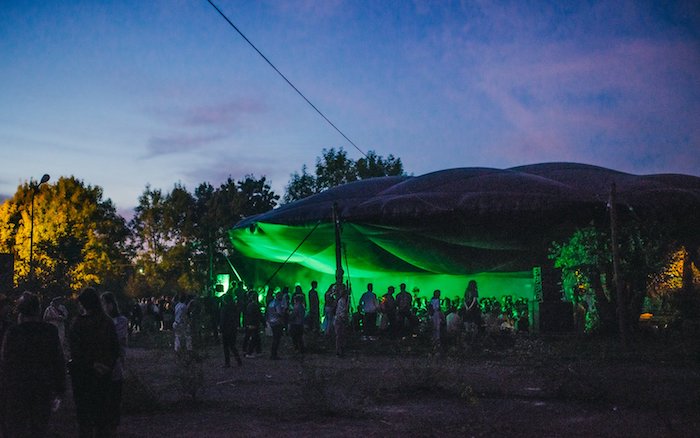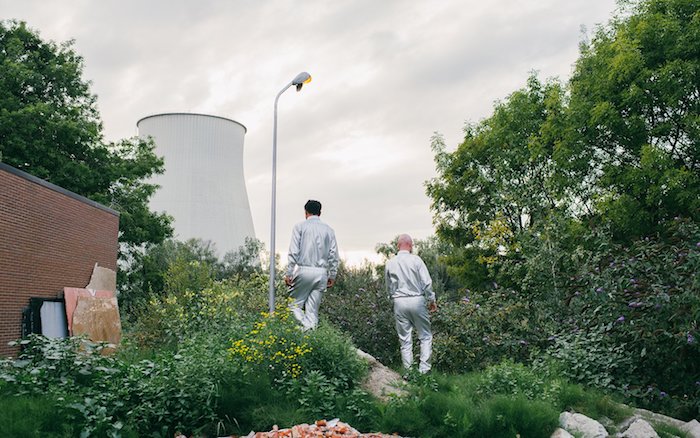In the ever-evolving creative space that houses dance music, progression and advancement through creativity are imperative for artists, promoters and festivals wishing to remain relevant. Every day we see the announcement of new festivals, DJs or parties. Competition is fierce and the demand for originality is increasing at unprecedented levels. Therefore it feels us with a sense of excitement and unexplainable anticipation when we discover events such as Horst Festival.
The festival that took place a few weeks back in September “is a movement dedicated to developing talent, cities & spaces.” Having successfully created a festival that celebrates arts & music in an intense collective experience, their 2019 edition was a chance to once again push their creativity into a new realm. Having built on the experience of the previous 5 years, the festival announced it would be moving to a former military site in the northern Brussels suburb of Vilvoorde.
Described by Horst as the ultimate blank canvas, the site spanned six hectares with various stages, creative hubs and chill-out zones. Immediately on your arrival, you were aware that Horst was different from most of its counterparts. As you approached the site, you were met by two imposing cooling towers. These structures were just one part of the enchanting post-industrial backdrop that the former military-based provided. Its arrangement of abandoned warehouses, mess halls and military architecture combined with reclaimed forestry allowed festival revellers to lazily enjoy the post-industrial backdrop while meandering between the sites four stages.
Over the three days, we witnessed some of the most progressive music we have witnessed in a long time. It appeared that each artist was not content with delivering the usual flat and unoriginal sets that seem to plague modern festivals. Instead, there was intense energy running from the three pillars of the festival. DJ, dancer and festival were all working symbiotically. There was a level of trust between dancer and DJ with each willing to learn from the other. As a result, there was an onslaught of exciting and often mind-bending sets from each artist. A highlight of which came from Deena Abdelwahed a resident at Paris, Concrete club. The Qatari born artist played an unexpected downtempo set on ‘The Opposite of Lost Stage’ with shredded rhythms and Eastern melodies complemented further by spellbinding vocals.
This ability to combine lesser-known artists with household names appears to be a conscious part of the Horst booking policy. Horst’s party people had a wide range of talent to choose from across the duration of the festival but what was nice was the balance and originality of the programming on each stage. Artistic license played a pivotal role in the scheduling rather than the weight of the artists’ name. This ensured each stage maintained a certain level of atmosphere from start to finish.
It should be noted that art is as much an integral part of Horst Festival as the DJ’s that fill each stage. This year saw the introduction of a series of workshops. The Music Lab, The Design Lab, The Art Lab and The Architecture Lab making up the four categories of workshop that ran throughout the festival. Ahead of the event, we were told:
The symbiosis between thought-provoking critical artworks, urban experiments, inventive stage design, scenography, architecture and the collective experience of an immersive music festival will hopefully refresh the overall perception of what a festival can be.
Horst Festival
Indeed they were not wrong. The festival was as thought-provoking as it was dance-driven which was a welcome change. As you roamed the site the festivals 15,000 attendees were subconsciously pushed to engage with the artwork making the festival feel like an immersive piece in itself.
As festivals go it is hard to imagine one more suited to music lovers and art fanatics than Horst Festival. The art designed by influential creatives, pioneers and outcasts will surely inspire the next generation of young creatives. While the music delivered an intense collective experience we have only witnessed on a selection of dance floors around the globe. The only disappointment for us as we left the festival was the draining feeling that we would have to wait another 362 days to return. Never the less “the end is never the end,” (Horst Festival).










